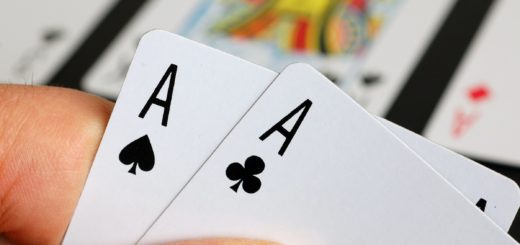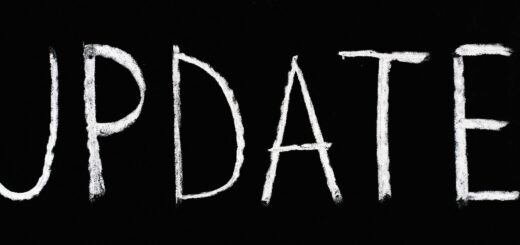Weight Loss and the Black Box
One of the most persistent myths about nutrition is that we put on weight by consuming more calories than we burn. Were this true, it would follow that the only healthy way to lose weight is some combination of eating fewer calories and exercising more. While this approach certainly works for some people on a temporary basis, it almost never results in permanent, sustainable weight loss. Fortunately, the myth is false, and you don’t have to eat less or exercise more to lose weight–if you start out overweight, that is!
Before I started eating whole food, plant-based, I gained and lost weight several times. Weight Watchers, Metabolife®, and Fen-Phen all worked for me. All of these are diet programs based on this calories myth. I never kept the weight off for long, and always grew heavier than I had been before starting the diet, because the myth focuses the attention on the wrong factor. Eventually, you can’t continue eating less, because you get so hungry that all you think about is your next meal. In the case of Fen-Phen, it entailed unacceptable health risks.
What should you do when you feel hungry? Eat! Dr. Dean Ornish in Eat More, Weigh Less, fully understands the issue.
Some other nutrition authors base their systems on “good calories” and “bad calories,” but nevertheless advocate unhealthy diets full of animal protein and saturated fat, convinced that the only “bad” calories live in white sugar and/or wheat gluten.
Even some of my lifestyle medicine heroes, when writing informally, seem to confirm the calorie balance myth. For example, in an article called “Why Calories Are Important (But Not In The Way You Think),” Dr. Alana Pulde wrote, “In other words, this [calorie restriction] diet strategy only works for people who don’t mind feeling hungry and it does nothing to address the medical issues resulting from consuming smaller quantities of these same unhealthy foods. If only there was a way to get fewer calories while still stretching the stomach adequately enough to shut off hunger signals.” I agree with the thrust of her article. However, even in an article about the misplaced focus on calories, she seems to accept that reducing caloric intake is essential to losing weight. It is not.
Since nutrition is something everyone feels qualified to pronounce upon, and since this myth is something that “everyone knows,” I have been informed by well-meaning friends and acquaintances that the fifty pounds I have lost and kept off for five years [now 12 years] now by eating whole food plant-based must have been due to calorie restriction. They are mistaken. There is no way I could maintain a calorie restriction diet for five years through sheer willpower. I clearly have not increased my level of exercise. In fact, I eat a lot. Because the food I eat now is less calorie dense than what I used to eat, I eat a lot in terms of volume and mass. That is not the point. I actually consume more calories now without exercising more. So, what is the problem with this myth? More importantly, what is the right way to think about weight gain and loss? Where do calories come into play?
A calorie is a unit of energy. It is the amount of heat it takes to raise the temperature of one gram of water by one degree Celsius at one atmosphere of pressure. When talking about the energy content of food, however, we use the same word, calorie, to refer to a kilocalorie, which equals one thousand small calories. A food calorie is enough heat to raise the temperature of a kilogram of water by one degree Celsius at one atmosphere. This is still a minor simplification, since the exact number of Joules of energy this takes depends to a small extent on the air content of the water and the temperature at which we start the experiment. However, this is not a technical article and you won’t have to understand even high school chemistry to follow it.
Calories are measured by devices called calorimeters. Essentially, they measure the amount of heat given off by burning the food as completely as possible. For this reason, the type of calorimeter used for food analysis is called a “bomb calorimeter.” A number of technical adjustments are performed to make sure that errors do not creep in due to pressure changes, warming up the equipment, and other factors. The number of calories assigned to a bit of food by a calorimeter represents a kind of theoretical upper bound to the number of calories our body could extract from the same food. This might be a useful approximation if our body were an internal combustion engine that, like a car burning gasoline, reduces its fuel to little but water, carbon monoxide, carbon dioxide, and soot. In fact, our body reduces our food to waste which organisms of other species can subsist on.
Let’s perform some thought experiments in which we consider our body as a black box. By this I mean an abstract, opaque container. We can measure what goes in and what comes out, but we don’t know what goes on inside. It might be a large number of very complex, interacting processes, as in fact exist in our body. In addition to physical changes like chewing, the box can perform chemical reactions. It can even contain living organisms which grow, reproduce, and die. For the purposes of this article, let’s rule out nuclear fission and fusion. We have to draw the line somewhere. Our black box can store its inputs for long periods of time. It can convert them to outputs and then store the outputs for arbitrary and varying lengths of time before emitting them.
In our thought experiment, suppose we just measure the mass of everything we ingest one day–solid, liquid and gas. Let’s compare that to the collective mass of everything we excrete, urinate, perspire, and respire. If we bleed that day, clip our nails or get a haircut, we have to count that too. The difference between the two should be the amount of mass we gain or lose that day. And it is!
Now suppose we carefully control what we put in the box, and make it exactly the same each day. We might expect the daily change in mass to always be the same, but it is not. Some days, the box produces more output than others, even given identical inputs. Some days, the box does more work or radiates more heat than others. When it does, its weight is lower. The box seems to have a minimum mass, below which it cannot go and still function normally. It has a maximum functional mass as well. We can use statistical methods to smooth out the data, but clearly the naïve view that mass delta equals mass in minus mass out is not very useful.
This is what leads people to consider calories. Energy content of food is certainly important. For one thing, we need enough energy to do our daily activities. If we don’t eat or drink it, we have to dig in to previously stored reserves. For another thing, it is the obvious difference between foods that make us obese, such as pizza and French fries, and foods that don’t, such as watermelon and spinach. And baked potatoes without the butter, cheese, bacon, and sour cream!
However, calories alone do not clarify the situation, because the calories we attribute to food are only a theoretical upper bound for the calories our body extracts from food to raise our temperature, grow our tissues, or store as muscle, fat, or glycogen. In practice, the calories we extract from food are always fewer than the calories in the food, and vary wildly from day to day and from one trial to the next.
Here is another thought experiment. Suppose we decide to live one day on nothing but sesame seeds and water. Sesame seeds are very high in fat and hence very calorie dense. A quarter cup (36 grams) of sesame seeds has 206 calories. Two-and-a-half cups of sesame seeds would meet my energy requirements for a whole day’s activities, if my body could use them all. If we eat whole sesame seeds with a spoon, even chewing diligently, a great number of them will pass through us undigested. Did we extract any calories from those unscathed seeds? What if we try the same 36 grams of sesame seeds, but this time we grind them into tahini first, adding a little garlic and lemon juice. Won’t a lot more of those 206 calories be available for our body to store and burn? In both trials, we ate the same number of calories, but our body was able to use very different numbers.
When thinking of a black box, it is easy to remember that we have to measure the output as well as the input. When discussing our actual body and actual eating, we use a theoretical and high number for the input, and generally ignore the output entirely! I have seen few discussions of the calorie content of human waste, though it is definitely not negligible.
If we peek just a little into the box, then the picture becomes less mysterious. I am certainly not going to claim that I fully understand all the marvelous physical, chemical, and biological processes that our body engages in to use food, let alone explain them in this article. The research has been done, however. Our body is wonderful at maintaining internal conditions, such as temperature, blood sugar, pH levels, and so on. This is called homeostasis. When one of these factors starts to get out of whack, our body activates processes to bring that factor back in line.
What our body extracts from food depends not only on the physical condition of the food, but its chemical nature, and the state of our body at the time. As Dr. Ornish points out, it takes very few calories for our bodies to store fat as fat. It takes many more to store complex carbohydrates as fat. So, as Dr. John McDougall often says, “The fat you eat is the fat you wear.” Dr. Campbell points out in Whole that given a varied diet of whole foods from plants, our bodies use what they need and eliminate the rest. The number of calories you get from an apple depends on a lot of factors besides the number of calories in the apple.
We evolved to eat mostly unprocessed plants. Their nutrients, including calories, come in packages that make us feel full, help digestion, take care of our gut flora, and slow down calorie absorption and insulin production. Some, like whole sesame seeds or corn kernels, have tough protective covers that have to be masticated in order to release their nutrition. Others, such as apples and avocados, have nutrition that is easily accessed, but is suspended in a matrix of fiber and water that provides a kind of natural time-release mechanism. As long as we eat whole food plant-based, eschewing oils, we tend toward our healthy body weight. We can eat more calories than we used to when we were fat. Our body takes what it needs and eliminates the rest.
Why do so many people accept the myth that weight loss depends on calorie balance? To answer that, let’s first ask and answer this question: What kind of food would you have to eat in order to best make it correct to say that the only way to lose weight is to eat less or exercise more? It would have to be food that the body easily accesses the calories of, so that calories in minus calories burned closely tracks calories stored. What kinds of foods are these? Hint: they do not include sesame seeds, but do include tahini. They do not include plain brown rice, but do include biscuits and gravy. You get the idea. If most of the calories one ingests come from fats, refined sugars, and refined flours, then the calorie balance myth bears some credence.
If one eats the standard American diet with its high proportion of animal-based foods and processed, low nutrition foods, then one gets on the diet roller coaster. In that case, the only way to lose weight is to eat less, but one can only eat less of low nutrition foods for so long before becoming over-fatigued or sick. So people believe the myth, and blame their lack of willpower for their inability to keep the excess pounds off. People exercise to extremes, exhausting themselves and risking injury, in pursuit of fitness. They neglect nutrition, or worse, buy into some fad nutritional system like the various low-carb and “paleo” diets.
You can reach your healthy weight without feeling deprived or counting calories, carbs, units or anything else. To do this, you have to change your lifestyle and eat whole-food, plant based all the time. Being eighty, ninety, or ninety-five percent compliant does not work for most people. For one thing, being compliant ninety-five percent of the time is not the same thing as taking ninety-five percent of your calories from whole plant foods. For another, it is easier in many cases to eliminate the bad choices entirely than to try to cut down. It makes the cravings go away. Once you find healthy foods you love to eat, you will love eating as much of them as you want without having to control portions. Soon you get into a virtuous cycle in which you feel so much better that it is easy to continue. That is how you consume more calories without counting or caring, and maintain your healthy weight. Moderate exercise helps, too, but don’t overdo it.







